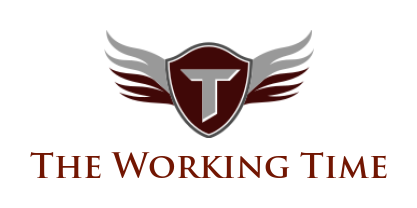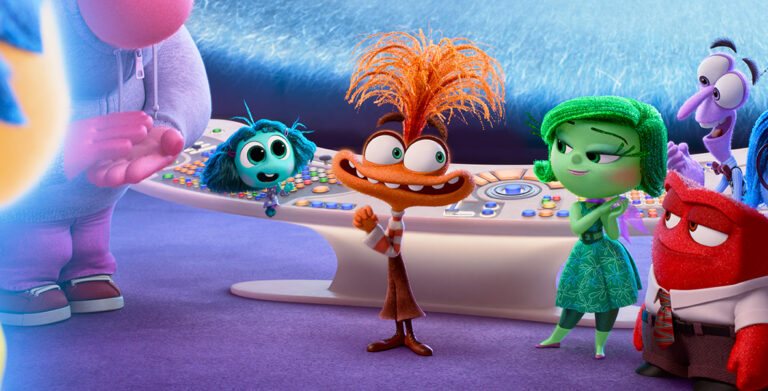Ever wondered what goes on inside your head when you’re feeling, well… everything all at once? That’s exactly what Pixar’s inside out 2 envy dives into—again. But this time, things get a little messier, a lot more relatable, and seriously thought-provoking. Especially with the introduction of a brand-new emotion: Envy.
Let’s take a peek inside Riley’s teenage brain and unravel the complexities of Inside Out 2 Envy—why she’s here, what she represents, and how she fits into our lives.
A Quick Recap: What Happened in the First Inside Out
Remember Joy, Sadness, Anger, Disgust, and Fear? They were the original gang managing Riley’s emotions in the first movie. It was all about learning that feeling sad isn’t a bad thing and that emotions need each other to work right. Heartwarming, right?
But now Riley’s growing up, and puberty brings a lot more than mood swings and awkward moments—it brings a whole new crew of emotions.
What’s New in Inside Out 2?
Pixar’s latest sequel throws us right into the chaos of adolescence. Riley’s now a teenager, and her emotional control panel is getting a major upgrade.
New Emotions on the Block
Inside out 2 envy introduces a bunch of new emotions. Think of it like adding more apps to an already overloaded phone—some helpful, some… well, not so much. Among these emotional newcomers is Envy, and she’s not just here to stir the pot—she’s a scene-stealer.
Spotlight on Envy
While Anxiety might be getting a lot of the attention, Envy quietly sneaks into the spotlight, adding depth to Riley’s emotional spectrum in a super clever way.
Meet Envy: A Fresh Face in Riley’s Emotional Squad
What Is Envy All About?
Envy isn’t just about wanting what others have. It’s about comparison, longing, and that gut-punch feeling when someone else shines a little too brightly. She’s small, green, and always peeking over someone else’s shoulder—literally and figuratively.
Why Envy Matters in a Teen’s Brain
During adolescence, comparison becomes second nature. Social media, school cliques, sports achievements—it’s comparison city. Envy steps in to reflect those inner tugs of “Why not me?” or “I wish I had that.”
Real-Life Psychology Meets Pixar
Psychologists often say that envy can be either destructive or motivational. Pixar leans into this dual nature, showing that while envy can sting, it also pushes Riley to grow and self-reflect.
How Pixar Portrays Envy (and Nails It!)
Voice, Design, and Personality
Pixar nailed Envy’s character design. She’s got big, sparkly eyes filled with longing, a teeny-tiny stature, and a whispery voice that oozes insecurity and desire. She’s adorably frustrating—and totally believable.
Envy’s Role in the Emotional Rollercoaster
Envy doesn’t scream or rage. She pouts, watches, and makes Riley question herself. Her presence causes little ripples that become big waves, especially during critical teen moments—like comparing herself to her cooler, more confident friends.
Envy vs. Jealousy: Aren’t They the Same?
A Simple Breakdown of the Two
Let’s clear this up: envy is when you want what someone else has. Jealousy is when you’re afraid of losing what you already have. Envy is looking at someone’s shiny new sneakers and feeling a little pang. Jealousy is fearing your best friend is ditching you for someone else.
How Envy Plays Differently in Riley’s Life
In the movie, Envy is subtle. She’s not destructive—she’s revealing. Her presence helps Riley see her vulnerabilities and what really matters to her. Instead of breaking Riley down, she becomes a mirror for self-awareness.
The Real-Life Lesson: It’s Okay to Feel Envy
Turning Envy Into Empathy
Here’s the twist: when we recognize envy, we can use it. Instead of sulking, we can learn. Envy shows what we value, what we desire, and maybe what we’re missing. It’s like emotional GPS pointing us toward what we really want.
What Parents Can Learn From Envy’s Character
Parents, take notes—envy is a teaching moment. It’s not about shutting it down. It’s about opening a convo: “What do you wish you had?” or “Why does that matter to you?” It helps teens develop emotional intelligence.
Fan Reactions: What Are People Saying About Envy?
The Internet’s Take
Twitter, TikTok, Reddit—fans are buzzing. Some say Envy is “the most relatable character” they didn’t know they needed. Others applaud Pixar for diving into nuanced emotional territory again.
Why Fans Are Loving (and Relating to) Envy
Envy isn’t just a kid thing. Adults get it too. From job promotions to Instagram lifestyles, envy sticks around. That’s why people of all ages are resonating with her—because she’s real.
A Deeper Dive: Emotional Growth in Inside Out 2
Riley’s Journey Into Adolescence
With puberty knocking at the door, Riley’s emotions get way more complicated. Joy can’t always fix everything, and Sadness has some stiff competition. Envy, along with other new emotions, creates a more realistic portrait of growing up.
Emotional Complexity Gets Real
This isn’t just a cartoon—it’s a crash course in emotional maturity. Inside out 2 envy shows that feelings are layered, sometimes contradictory, and that’s okay.
Pixar’s Magic Touch: Why Inside Out 2 Hits Harder
Dealing With More Than Just Sadness
While the first film tackled sadness in a groundbreaking way, the sequel explores a whole ecosystem of tricky feelings—anxiety, embarrassment, and of course, envy. It’s emotional storytelling at its finest.
The Movie’s Subtle Messages for Adults
Parents watching alongside their teens might catch the deeper layers: the importance of vulnerability, the traps of comparison, and the beauty of emotional honesty. It’s like Pixar’s giving both generations a nudge to grow—together.
Final Thoughts on Envy and Inside Out 2
Envy might not be the loudest emotion, but she’s certainly one of the most important. Inside Out 2 envy doesn’t just add her for drama—it uses her to spotlight something we all struggle with, especially in our teenage years: wanting more, feeling less, and learning how to navigate both.
So next time you feel that little tug in your gut, remember Envy. She’s not here to ruin your day—she’s here to help you understand it better.
FAQs
1. Who voices Envy in Inside Out 2?
The character Envy is voiced by a fresh voice actor (TBD based on official release), bringing a whispery, reflective tone that perfectly fits her emotional profile.
2. Is envy a bad emotion?
Nope! Envy, like all emotions, has a purpose. It shows you what you care about and can actually motivate you if you channel it positively.
3. What age group is Inside Out 2 for?
While kids will enjoy the fun and colors, teens and adults will truly resonate with the deeper emotional layers. It’s a film for all ages.
4. How does Envy impact Riley in the movie?
Envy plays a subtle but crucial role in Riley’s development. She makes Riley question herself, compare herself to others, and eventually grow from those feelings.
5. Will there be more emotions in future Inside Out movies?
Nothing official yet, but given Pixar’s creativity, don’t be surprised if more emotions show up to keep Riley (and us) on our toes!

